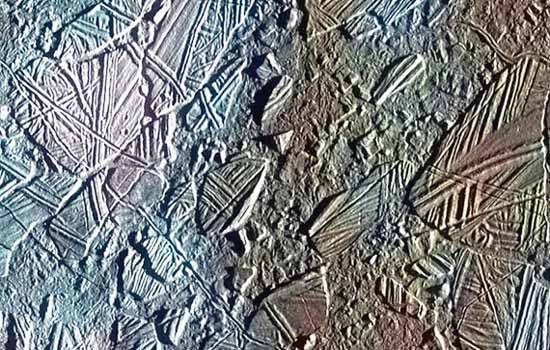Thanks for the Memories

Ice crust on Jupiter’s moon Europa. The data taken by the Galileo spacecraft reveal that Europa could be hiding a salty ocean up to 100 kilometers deep underneath its frozen surface. Image Credit: NASA's Jet Propulsion Lab
On September 21, 2003 the spacecraft Galileo ended a 14-year mission exploring Jupiter and its four largest moons. The Little Spacecraft That Could, Galileo and its ground controllers overcame numerous technical and mechanical difficulties to return 30 gigabytes of data, including 14,000 pictures, to Earth. This information has expanded our knowledge of our solar system’s largest planet and its moons, and we are eager to return.
The following is an excerpt from This Week on Galileo describing Galileo’s last minutes:
“…with 7 minutes and 10 seconds to go, Galileo moves from day to night as it passes into Jupiter's shadow, and, one minute later, passes behind the limb of the giant planet as seen from Earth. Only 9,283 kilometers (5,768 miles) above the clouds, the path of the spacecraft now takes it out of sight of ground controllers, never to be seen again. The last data ever to be received from the Galileo spacecraft has now been sent. The remaining few minutes of the craft will be spent in darkness, and alone... .”
For more information on Galileo, see the project homepage at NASA’s Jet Propulsion Laboratory, located at CalTech.











